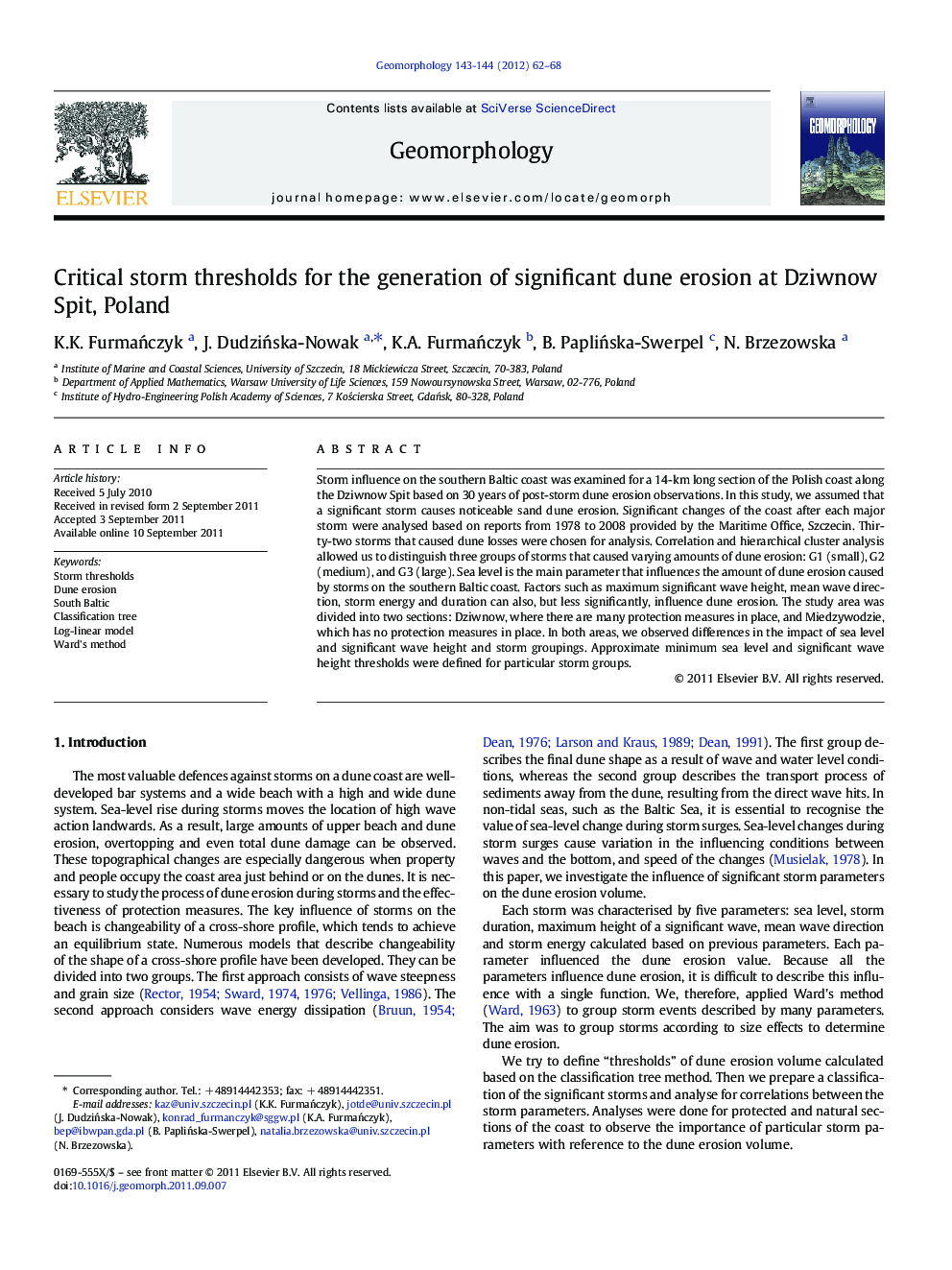| Article ID | Journal | Published Year | Pages | File Type |
|---|---|---|---|---|
| 4685267 | Geomorphology | 2012 | 7 Pages |
Storm influence on the southern Baltic coast was examined for a 14-km long section of the Polish coast along the Dziwnow Spit based on 30 years of post-storm dune erosion observations. In this study, we assumed that a significant storm causes noticeable sand dune erosion. Significant changes of the coast after each major storm were analysed based on reports from 1978 to 2008 provided by the Maritime Office, Szczecin. Thirty-two storms that caused dune losses were chosen for analysis. Correlation and hierarchical cluster analysis allowed us to distinguish three groups of storms that caused varying amounts of dune erosion: G1 (small), G2 (medium), and G3 (large). Sea level is the main parameter that influences the amount of dune erosion caused by storms on the southern Baltic coast. Factors such as maximum significant wave height, mean wave direction, storm energy and duration can also, but less significantly, influence dune erosion. The study area was divided into two sections: Dziwnow, where there are many protection measures in place, and Miedzywodzie, which has no protection measures in place. In both areas, we observed differences in the impact of sea level and significant wave height and storm groupings. Approximate minimum sea level and significant wave height thresholds were defined for particular storm groups.
